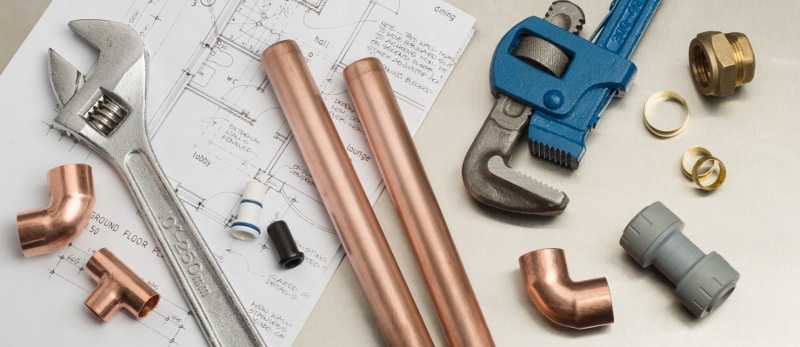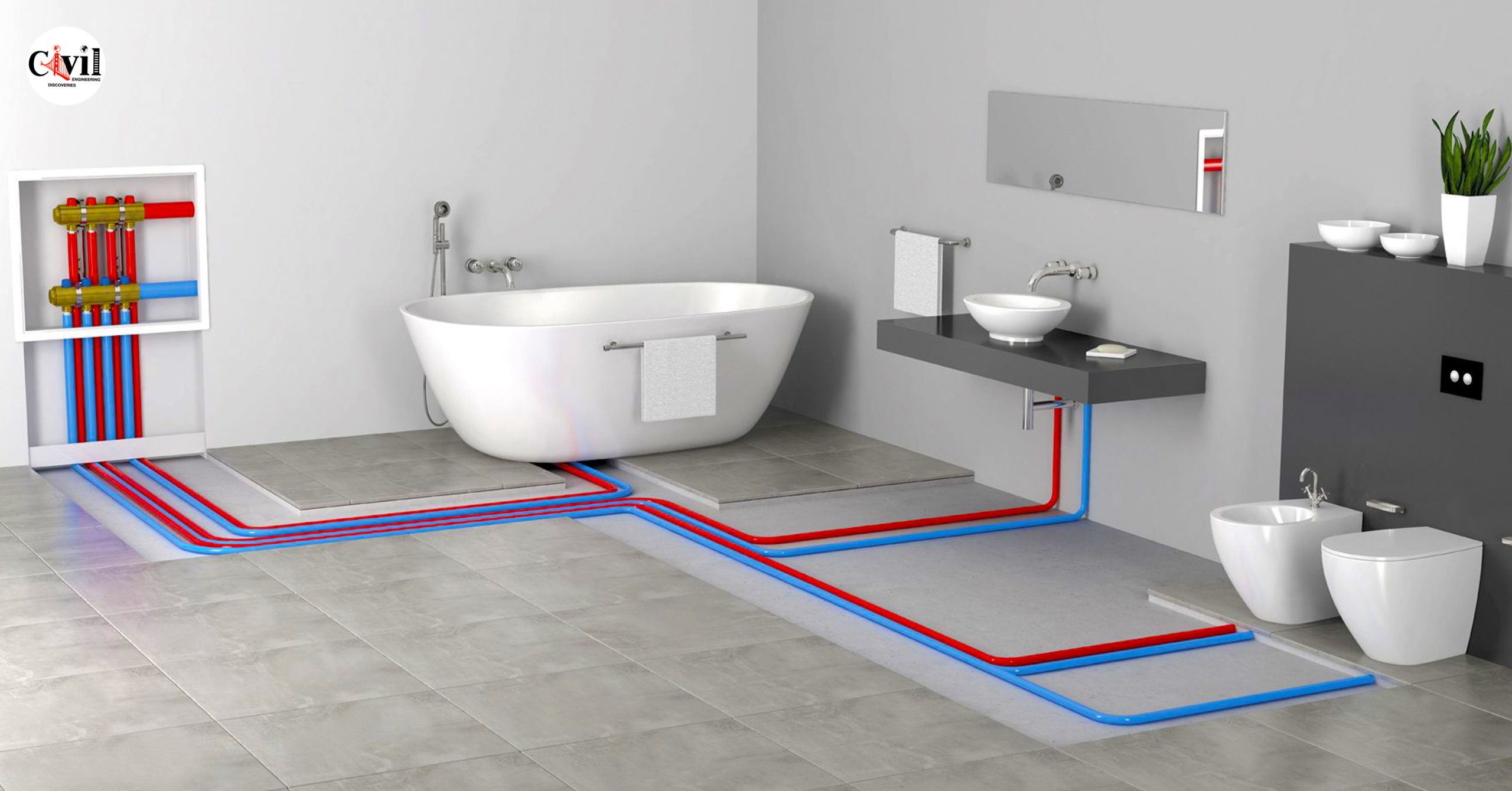The writer is making a few great annotation on the subject of The Inner Workings of Your Home's Plumbing as a whole in the article further down.

Understanding just how your home's plumbing system works is essential for every single house owner. From delivering tidy water for alcohol consumption, cooking, and showering to securely removing wastewater, a well-maintained pipes system is vital for your family's health and wellness and comfort. In this comprehensive overview, we'll explore the detailed network that comprises your home's plumbing and deal tips on upkeep, upgrades, and dealing with common problems.
Introduction
Your home's pipes system is greater than just a network of pipelines; it's an intricate system that guarantees you have access to clean water and efficient wastewater removal. Knowing its parts and just how they work together can aid you protect against expensive repair work and make certain everything runs efficiently.
Fundamental Components of a Plumbing System
Pipelines and Tubing
At the heart of your pipes system are the pipes and tubes that bring water throughout your home. These can be made of different materials such as copper, PVC, or PEX, each with its benefits in terms of longevity and cost-effectiveness.
Fixtures: Sinks, Toilets, Showers, and so on.
Fixtures like sinks, toilets, showers, and tubs are where water is used in your house. Understanding exactly how these fixtures link to the pipes system assists in detecting issues and intending upgrades.
Valves and Shut-off Factors
Valves manage the circulation of water in your pipes system. Shut-off shutoffs are vital during emergency situations or when you require to make repair services, enabling you to isolate parts of the system without interfering with water flow to the entire residence.
Water System
Key Water Line
The primary water line connects your home to the metropolitan water system or a personal well. It's where water enters your home and is dispersed to different fixtures.
Water Meter and Stress Regulator
The water meter actions your water usage, while a pressure regulatory authority guarantees that water moves at a risk-free pressure throughout your home's pipes system, avoiding damages to pipes and fixtures.
Cold Water vs. Warm water Lines
Understanding the difference between cold water lines, which supply water directly from the major, and hot water lines, which lug heated water from the water heater, aids in fixing and preparing for upgrades.
Drain System
Drain Water Lines and Traps
Drain pipelines bring wastewater away from sinks, showers, and bathrooms to the sewage system or sewage-disposal tank. Catches avoid sewage system gases from entering your home and also catch debris that can trigger obstructions.
Ventilation Pipelines
Ventilation pipelines allow air right into the drainage system, stopping suction that could slow down drainage and trigger catches to empty. Correct ventilation is crucial for preserving the honesty of your plumbing system.
Value of Proper Water Drainage
Ensuring appropriate water drainage prevents back-ups and water damage. Consistently cleansing drains and keeping traps can avoid pricey repairs and prolong the life of your pipes system.
Water Heating Unit
Sorts Of Water Heaters
Water heaters can be tankless or standard tank-style. Tankless heating systems heat water on demand, while containers store heated water for instant usage.
Upgrading Your Pipes System
Reasons for Upgrading
Updating to water-efficient components or replacing old pipes can enhance water top quality, reduce water expenses, and boost the worth of your home.
Modern Plumbing Technologies and Their Benefits
Check out modern technologies like clever leak detectors, water-saving toilets, and energy-efficient water heaters that can conserve cash and lower environmental effect.
Expense Factors To Consider and ROI
Compute the upfront costs versus long-lasting financial savings when taking into consideration plumbing upgrades. Numerous upgrades pay for themselves with minimized energy costs and fewer repairs.
How Water Heaters Link to the Plumbing System
Comprehending just how hot water heater attach to both the cold water supply and warm water circulation lines helps in diagnosing issues like insufficient hot water or leaks.
Maintenance Tips for Water Heaters
Frequently flushing your water heater to eliminate sediment, inspecting the temperature settings, and examining for leaks can prolong its life expectancy and enhance energy effectiveness.
Typical Plumbing Issues
Leaks and Their Reasons
Leakages can take place because of maturing pipes, loose fittings, or high water stress. Resolving leakages without delay stops water damage and mold growth.
Clogs and Blockages
Obstructions in drains pipes and commodes are commonly triggered by flushing non-flushable items or a buildup of grease and hair. Making use of drainpipe displays and being mindful of what goes down your drains can protect against obstructions.
Indications of Plumbing Problems to Watch For
Low tide stress, sluggish drains, foul odors, or unusually high water costs are indications of prospective plumbing troubles that must be attended to promptly.
Pipes Upkeep Tips
Regular Inspections and Checks
Set up annual plumbing examinations to capture problems early. Look for indicators of leaks, corrosion, or mineral build-up in faucets and showerheads.
DIY Upkeep Tasks
Easy tasks like cleansing faucet aerators, checking for commode leaks using color tablets, or shielding subjected pipes in cool climates can prevent significant plumbing concerns.
When to Call an Expert Plumbing
Know when a pipes issue calls for expert knowledge. Trying complex fixings without appropriate expertise can cause more damages and higher repair service prices.
Tips for Decreasing Water Use
Simple behaviors like repairing leakages immediately, taking much shorter showers, and running full lots of laundry and meals can conserve water and lower your energy expenses.
Eco-Friendly Pipes Options
Consider lasting plumbing materials like bamboo for floor covering, which is durable and environmentally friendly, or recycled glass for counter tops.
Emergency situation Preparedness
Actions to Take During a Plumbing Emergency situation
Know where your shut-off valves lie and how to shut off the water in case of a burst pipeline or significant leak.
Value of Having Emergency Situation Get In Touches With Useful
Maintain contact info for neighborhood plumbing technicians or emergency situation services easily offered for quick reaction throughout a plumbing crisis.
Environmental Influence and Conservation
Water-Saving Components and Appliances
Setting up low-flow faucets, showerheads, and bathrooms can significantly minimize water use without compromising efficiency.
DIY Emergency Situation Fixes (When Applicable).
Temporary repairs like making use of duct tape to spot a leaking pipe or positioning a bucket under a leaking tap can minimize damages till a professional plumbing shows up.
Verdict.
Recognizing the makeup of your home's plumbing system empowers you to maintain it efficiently, conserving money and time on fixings. By adhering to normal maintenance routines and staying informed about contemporary plumbing innovations, you can ensure your plumbing system operates effectively for many years to find.
The Anatomy of Your Home s Plumbing System
Understanding the anatomy of your home s plumbing system is essential for any homeowner. It not only helps in identifying potential issues but also facilitates effective communication with professionals when repairs or upgrades are needed. Your home s plumbing system is more than just pipes and faucets; it s a complex network that ensures the efficient and hygienic flow of water in and out of your house. In this blog, we ll dissect the crucial components of your home s plumbing system. For those in Antelope Valley, Brock Plumbing is your trusted partner for all your plumbing needs, ensuring your system functions smoothly and efficiently.
Water Supply System
Main Water Line: This is where your home s plumbing system begins. The main water line connects your home to the public water supply or a private well. Pipes and Shut-off Valves: Pipes distribute water throughout your home. Shut-off valves are crucial for controlling the flow of water and making repairs without shutting off the entire system. Drainage System
Drain Pipes: These pipes carry waste and water away from sinks, toilets, and showers. Vents: Vents allow sewer gases to escape and help maintain proper pressure in the drainage pipes, ensuring efficient flow of wastewater. Traps: Every fixture has a trap, a U-shaped pipe that holds water and prevents sewer gases from entering your home. The most common is the P-trap under sinks. Fixtures and Appliances
Fixtures and appliances are the most interacted with parts of your plumbing system. They include sinks, toilets, showers, dishwashers, and washing machines. Each fixture and appliance has its own supply and drainage connection, ensuring they receive clean water and can dispose of wastewater effectively.
Water Heating System
Your water heater is a crucial component, providing hot water to various fixtures and appliances in your home. It can be tank-based or tankless, with each type having its own set of advantages and maintenance requirements. Regular maintenance is essential to ensure efficient operation and extend the lifespan of the unit.
Sump Pump
In areas prone to flooding or with high water tables, a sump pump is an essential part of the plumbing system. It s installed in the lowest part of your basement or crawlspace and pumps out water that accumulates, preventing flooding and protecting your home from water damage.
Septic System
Homes that are not connected to a municipal sewer system have a septic system and an underground wastewater treatment structure. Understanding how to maintain your septic system is crucial to prevent backups, odors, and early system failure.
Conclusion
Your home s plumbing system is a complex and essential network, ensuring the efficient and hygienic flow of water in and out of your property. Understanding its key components helps in maintaining it properly and identifying issues before they escalate into major problems. For residents in Antelope Valley, Brock Plumbing is dedicated to providing top-notch services, ensuring that every part of your plumbing system is in perfect working order. Trust our team of professionals to handle all your plumbing needs, ensuring your home remains comfortable, safe, and well-maintained.
https://brockplumbinganddrains.com/blog/the-anatomy-of-your-homes-plumbing-system/

Do you enjoy reading about ? Leave feedback down the page. We would be glad to know your insights about this piece. We hope to see you back again in the future. For those who enjoyed our page please remember to pass it around. I praise you for being here. Come back soon.
Recurring Service Plans